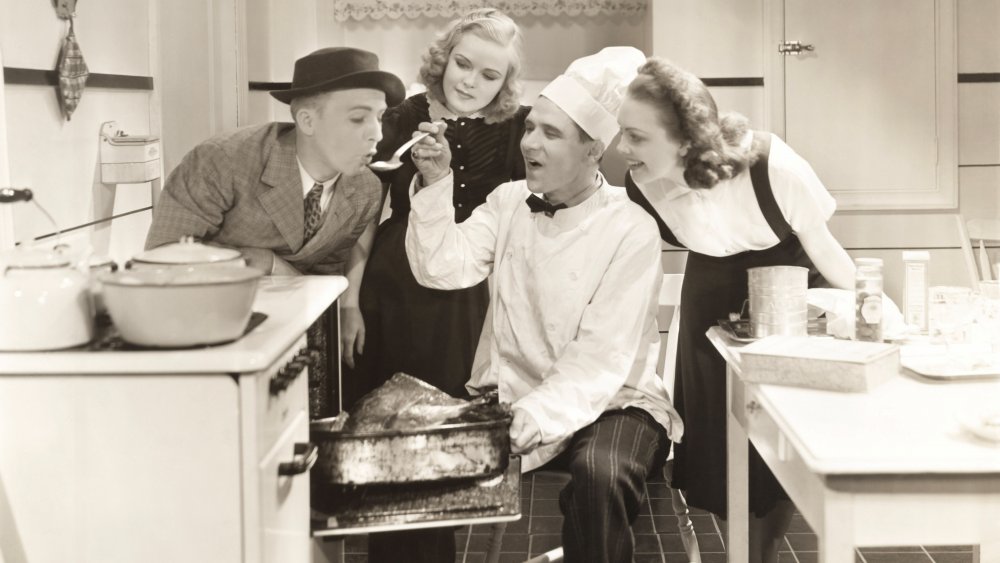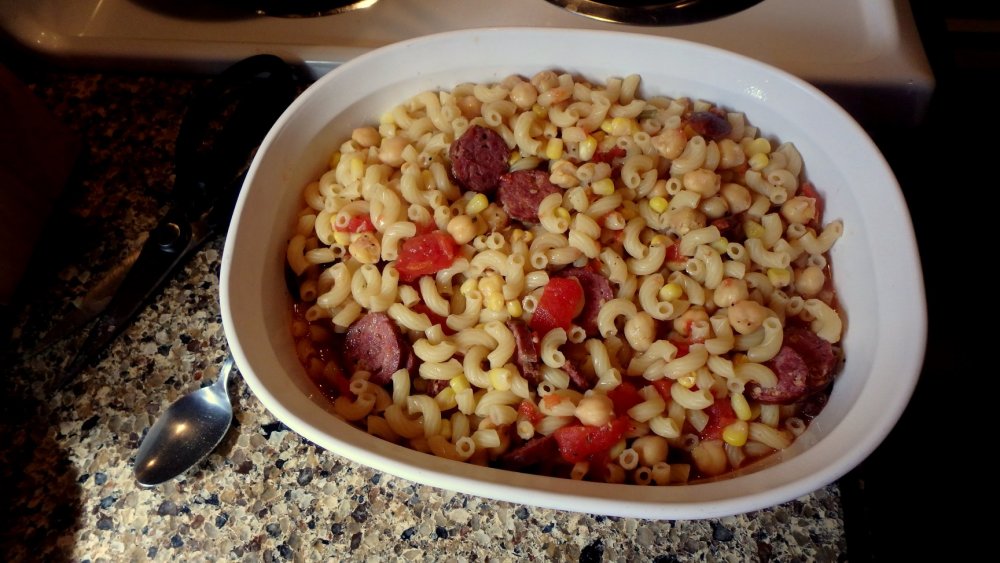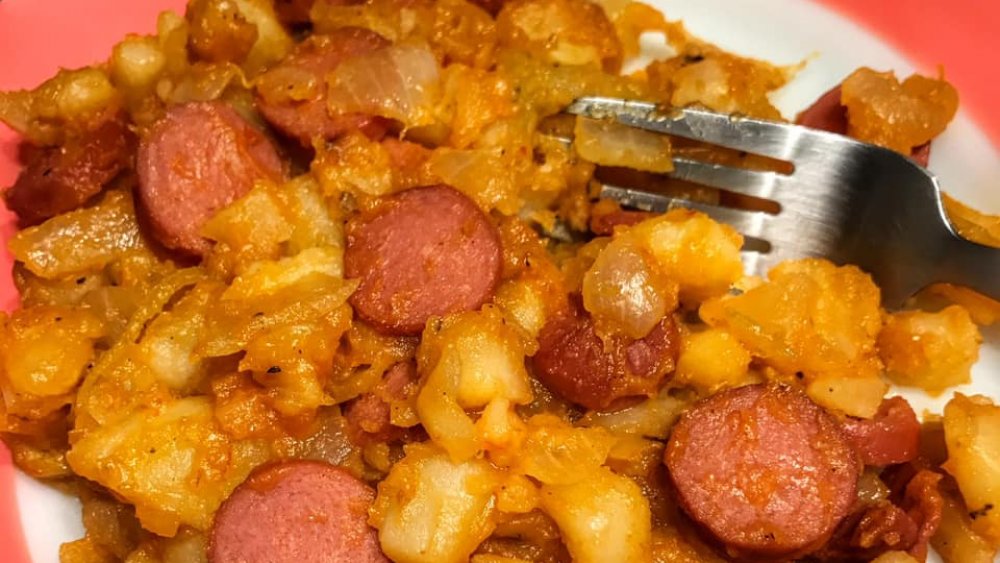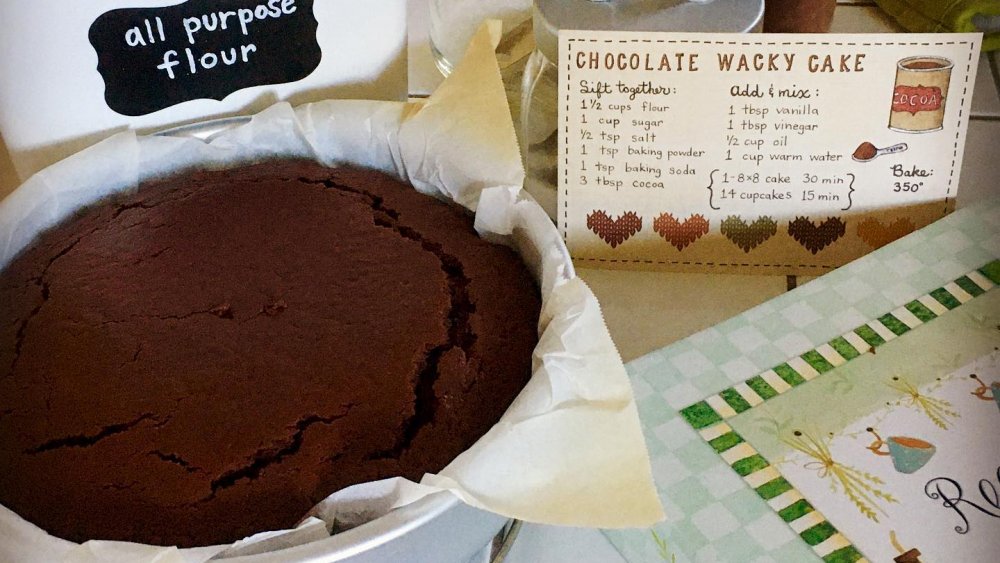These Great Depression Foods Are Becoming Popular Again
It may seem like we've all been living through some tough times lately, and no doubt it's true. Unemployment is on the rise, and every day seems to bring news of more businesses declaring bankruptcy (JC Penney, J Crew, and numerous other companies) or shutting their doors forever (R.I.P. Wet Seal, Souplantation, and Sweet Tomatoes). World events seem scary, but closer to home, things aren't all that rosy, either. To paraphrase one of the greatest hits of the Herbert Hoover administration, "Unhappy days are here again!"
But, as history will tell us, we (well, maybe our grandparents, plus or minus a "great" or so) got through this before back in the '30s, and we can do it again. And one way we can all come together is over the table... okay, not exactly together together, but together separately, in our own individual kitchens, sharing these everything-old-is-new-again recipes. Some of these Depression-era creations might, at first glance, seem a bit odd to our 21st-century taste buds that are more attuned to cauliflower pizza and spinach smoothies, but they're undeniably frugal. And well, sometimes cheap and filling trumps just about every other consideration when it comes to feeding hungry-but-broke bellies.
As many modern-day cooks are discovering, these dishes are surprisingly edible, after all. As Great-Granny would probably tell you, "Don't knock it 'til you've tried it!" (And also: "Clean your plate! There are children starving in Armenia!")
Hoover Stew
Speaking of dear old President Hoover, he was the inspiration for this oddly tasty dish that was so cheap, it was made up in mass quantities and dished out at the soup kitchens that started popping up at a time when fully 25 percent of the workforce had been transformed into the out-of-work force. According to A Coalcracker in the Kitchen, it's made from macaroni, hot dogs, canned corn, and stewed tomatoes, although other ingredients could be added to make for a kind of shanty town stone soup.
To make this Great Depression dish, cook up a pound of pasta (elbow mac would be more traditional than any of your fancy farfalles or fusillis, but use what you've got). Slice a pound of hot dogs into coins, then open two cans of stewed tomatoes and simmer the hot dogs in these. Add in a can of corn — and, what the heck, throw in some beans, too, if you feel like a real splurge. Drain the macaroni and add to the vegetable/hot dog mix; simmer until all ingredients are hot. (Add pasta water if it seems dry and/or you're trying to stretch it out as far as possible.)
According to a Depression survivor named Mrs. Dunn quoted in Just a Pinch Recipes, Hoover Stew was considered to be "a luxury or celebration meal, since it included meat." She says it was a one-pot meal, but they'd have it with celery or carrot sticks when the budget (or garden) allowed.
Poorman's Meal
This recipe was the one that launched the Great Depression Cooking YouTube channel, featuring the 90-something Clara Cannucciari who'd been there, done that, and remembered what they ate and how they cooked it. This particular meal also stars hot dogs, a.k.a. "Hoover Steaks." (Okay, that's not an actual historical nickname, but it seems appropriate.) They were cut up into coins again (easier to divvy up into multiple servings that way, as well as give the illusion of more meat) and fried in oil with diced potatoes and sliced onions.
Seriously, what's not to love about any of that? Well, your arteries and waistline may not be too thrilled, but dieting is a rich person's luxury. The poverty manifesto states: "Don't turn up your nose at any kind of food when it's offered," and when something is cheap and tasty, don't inquire too closely as to its nutritional profile. As one of the YouTube commenters confessed, "Me watching these videos in 2019: So relaxing. Me watching these videos in 2020: Aggressive note-taking." Another noted that this dish may be considered poverty cuisine in the U.S., but it's pretty traditional in most Slavic countries, while still another commenter opined that, "The food of the poor is some of the most delicious food there is."
Egg drop soup
Yet another one of Clara Cannucciari's Great Depression Cooking recipes is for something you may have seen on a Chinese takeout menu: egg drop soup. Sounds kind of exotic for a Depression-era meal, doesn't it? And yet, Clara assures us that this was something they ate on the reg back in the '30s.
Her version, unlike the Chinese restaurant kind, contains potatoes, which she fries up along with more chopped onions in a little bit of olive oil. Clara adds bay leaves, salt, and pepper, and when the vegetables are nicely browned, she fills the pot halfway with water and adds yet more salt and pepper. She lets the broth simmer till the potatoes are done, then stirs in a couple of eggs that she scrambles in the pot. Clara also says to leave a few eggs whole, so each person eating the soup gets one whole poached egg. Just before the eggs are done cooking, she stirs in a few spoonfuls of parmesan cheese. In order to serve this soup, Clara places a slice of toasted bread in each bowl, tops the toast with one of the poached eggs, and spoons the soup over the top.
Clara describes this dish as "very inexpensive and very nutritious and very good." Sadly, as this video memorial makes clear, Clara passed away in 2013 at the age of 98, but she might be glad to know that her recipes are now more relevant than ever.
Depression cake
Even in the midst of an economic collapse, that doesn't mean you have to forego dessert. One of the best-loved Depression-era recipes has been kept alive in numerous church cookbooks over the years under names such as "Depression Cake," "Wacky Cake," or "Crazy Cake." It even snuck into a modern edition of Joy of Cooking under the name of "Dairy Free Chocolate Cake (Vegan)" (via Medium). While plant-based eating was more of a dire necessity than a lifestyle choice back in the '30s, this cake recipe fits the bill due to skipping pricey butter, eggs, and milk in favor of cheaper, non-dairy substitutes.
Knox United Church supplies a passed-down-through-generations recipe calling for 1 1/2 cups all-purpose flour, 1 teaspoon baking soda, 3 tablespoons cocoa powder, 1 cup sugar, 1 teaspoon baking powder, and ½ teaspoon salt. Sift these together into an ungreased 8-inch by 8-inch pan, then poke 3 dents into the pile. Pour a teaspoon of vanilla into one dent, a tablespoon of vinegar (white or cider) into another, and a tablespoon of vegetable oil into the third. Pour one cup of warm water over the whole mess, then stir it up well. Bake at 350 degrees for 35 minutes. If you prefer vanilla, you can just omit the cocoa powder as in this recipe from Premeditated Leftovers.
In the immortal words of George Gershwin from his Depression-era hit musical of the same name (via The Guide to Musical Theatre), "Let 'em eat cake!"




